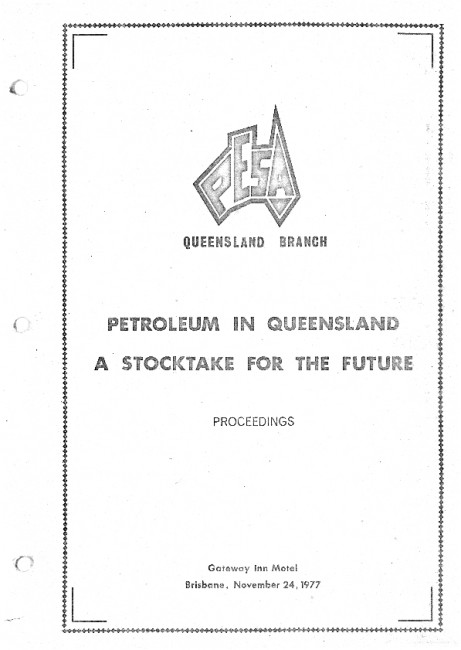Publication Name: Petroleum in Queensland - A Stocktake for the Future
Authors: Maurice L.P. Cadart
Date Published: November 1977
Number of Pages: 30
Reference Type: Journal Article
Abstract:
The Georgina Basin lies across the Queensland-Northern Territory border, between 18? and 25? of latitude south.Approximately 100,000 km2 or one-third of the basin area is in Queensland. Five-eights of the basin contains less
than 500 m of Paleozoic sediments but the Toko Sub-basin in Queensland is believed to contain over 6,000 m of strata ranging in age from Lower Cambrian to Late Devonian. There, the section is dominantly marine carbonate, sandstone and shale of Middle Cambrian to Ordovician age. Seismic coverage is incomplete and the exact outline of the so4th-eastern margin of the Georgina Basin is poorly defined.
Approximately 14 exploratory wells have been drilled in the Georgina Basin. Six of these were located in Queensland. Prospects for the discovery of hydrocarbons are probably limited to the Toko Sub-basin; the largest hydrocarbon show was recorded at Ethabuka No. 1 where gas flowed at an estimated rate of 7,080 m3 per day from the Ordovician Coolibath Formation. Unfortunately the well had to be abandoned prematurely before it reached its targets.
Bitumen, tar and oil stains occur in Lower Ordovician and Middle Cambrian rocks; there are suitable reservoir facies within the Cambro-Ordovician and Middle Cambrian sediments and effective cap rocks were penetrated in the Toko Sub-basin. The reasonably high salinity of the formation water at Ethabuka No . 1 suggests that the deeper part of the Toko Sub-basin has not been subjected to fresh water flushing so evident in other parts of the Georgina Basin.
Structures suitable for entrapment of hydrocarbon have been mapped in the Toko Sub-basin and remain to be drilled. Additional work is required to follow up seismic leads located in the deeper part of the sub-basin.


